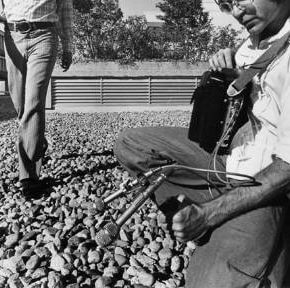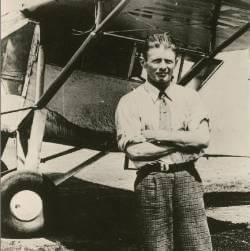National Daiquiri Day

Hemingway statue at El Floridita
Today is National Daiquiri Day. Although conflicting legends abound, the most likely origin story credits an American engineer named Jennings Cox with inventing the drink.
In 1898, Cox supervised an iron mining operation in a town off the coast of Cuba called Daiquiri. Every night, he and his crew gathered at a local bar after work.
One evening, when the bar ran out of gin, Cox blended Bacardi with sugar and lime and named it after the Daiquiri mines. It quickly became a staple in Havana.
In 1909, the U.S.S. Minnesota docked in the area. Captain Charles Harlow brought junior medical officer Lucius Johnson with him on a tour of the 10-year-old Spanish-American battlegrounds. They met Cox at Daiquiri and enjoyed his creation.
Johnson brought the recipe to the Army and Navy Club in Washington, D.C., where it became a favorite — except during Prohibition, of course. By the 1940s, the daiquiri had become a fixture in bars across the country.
National Daiquiri Day falls just two days before the birthday of Ernest Hemingway (July 21, 1899 – July 2, 1961). The author immortalized the cocktail in his novel, Islands in the Stream: “This frozen daiquiri, so well beaten as it is, looks like the sea where the wave falls away from the bow of a ship when she is doing thirty knots.”
He’s also quoted as saying, “Don’t bother with churches, government buildings or city squares, if you want to know about a culture, spend a night in its bars.”
He certainly followed his own advice. El Floridita, a bar Hemingway frequented in Havana, Cuba, has immortalized him with a life size statue. The bartender there, Constantino Ribalaigua, created a doubly strong, sour version of the cocktail for the writer, who was diabetic and apparently worried more about the toxic effects of sugar than alcohol.
The following is based on that recipe, according to A. E. Hotchner, who documented his stay at the author’s home in Cuba in his book entitled Papa Hemingway.
Papa Doble
Ingredients:
3 oz Bacardí Carta Blanca
Juice of 2 limes
½ oz grapefruit juice
6 drops of Maraschino liqueur
Preparation:
Blend all ingredients with crushed ice and serve in an ice-cold coupe glass.
Whether you like your daiquiris sweet, strong, or virginal, raise a glass and have a happy National Daiquiri Day–or evening, if you prefer. Cheers!


 What is an Insurance Nerd?
What is an Insurance Nerd? According to a recent study conducted by McKinsey and Co., 25 percent of insurance professionals will reach retirement age by 2018. Another study by Griffith Insurance Education Foundation found that only 5 percent of college students indicated they were “very interested” in pursuing a career in the insurance industry. As a result, the field is facing a critical talent gap.
According to a recent study conducted by McKinsey and Co., 25 percent of insurance professionals will reach retirement age by 2018. Another study by Griffith Insurance Education Foundation found that only 5 percent of college students indicated they were “very interested” in pursuing a career in the insurance industry. As a result, the field is facing a critical talent gap.

 Today is Wrong Way Corrigan Day. On July 17, 1938, Douglas Corrigan (January 22, 1907 – December 9, 1995), a pilot and aircraft mechanic who had recently flown from California to New York, took off from Floyd Bennett Field in Brooklyn, ostensibly to make the transcontinental trip back to Long Beach. Things didn’t go according to plan.
Today is Wrong Way Corrigan Day. On July 17, 1938, Douglas Corrigan (January 22, 1907 – December 9, 1995), a pilot and aircraft mechanic who had recently flown from California to New York, took off from Floyd Bennett Field in Brooklyn, ostensibly to make the transcontinental trip back to Long Beach. Things didn’t go according to plan.